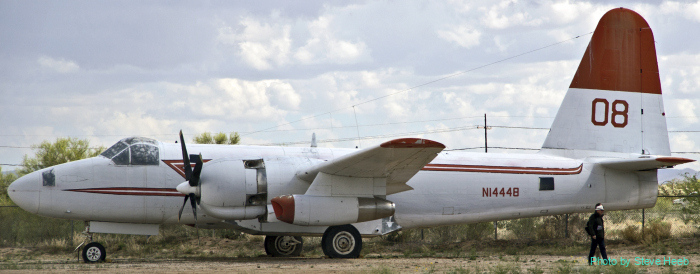
I photographed these Lockheed P-2 Neptune at the Pima Air Museum in Tucson, Ariz., during a visit in the spring of 2017, and then an airworthy Neptune that looks bundled up among the Erickson Collection in Madras, Ore. The Yanks Air Museum in Chino has a nice example of the Neptune’s twin 20mm cannon on display. Amazingly, I was able to photograph four Neptunes in the area around the Museum of Mountain Flying in Missoula, Mont.
1961 Lockheed P2V-7S Neptune 148360 (#726-7256)
previously listed as P-2V-7/P-2H